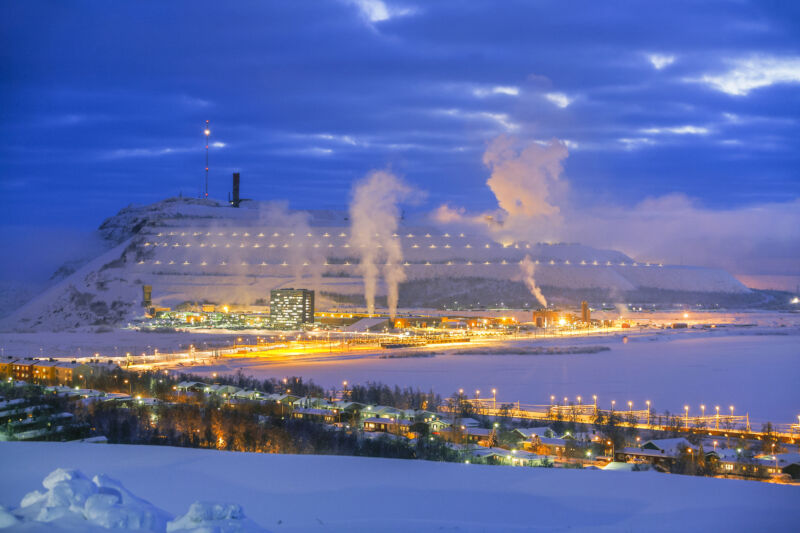
As the world warms, countries with holdings in the Arctic are increasingly eyeing the region for development and use. As Ars reported last July, the frigid polar zone might be open to increased shipping, as it remains free of ice longer under climate change.
However, policymakers and scientists need better tools to understand the extent to which humans are using the Arctic and what the future holds for the roads, settlements, and other developments in the region. New research claims to provide a more accurate way to look at how human use is changing the Arctic.
According to Annett Bartsch, lead author of the paper, there are currently no good sources of data for risk assessments and vulnerability studies for the infrastructure in the Arctic. She said that OpenStreetMap is “incomplete and inconsistent” in the Arctic and that previous research using it just accepted its limitations.
The new effort makes use of machine learning, previously under-used satellite data (among other data sets), and a lot of human work hours for its methods and insights. The project provides what Bartsch says is a better picture of human infrastructure in one of Earth’s coldest regions. Primarily, the work looks at coastal areas—as many communities in the Arctic are near the ocean—but it studies inland areas as well.
“We wanted to create something that is consistent and really captures as many settlements as possible,” Bartsch told Ars.
Hi-res
A few years ago, high-resolution satellite images became available through the European Space Agency, and Bartsch and her team accessed them to form the basis of the recent research. These images have a resolution of 10 meters, which is superior to the 30-meter resolution previously available through the Landsat Program. That might not sound like a huge difference, but when you’re measuring buildings and roads, it can mean a lot.
“If you think about the width of a road, with 30 meters, you cannot capture anything. But with 10 meters, things become interesting,” Bartsch said, though she added that there are still many features (human-made or otherwise) you can’t detect at even a 10-meter resolution.
Afterward, the team used machine learning to identify every feature they could—a process that took them several years, after a year or two of developing the algorithms. For the sake of the research paper, the team also integrated other pieces of relevant data, such as trends in ground temperature, permafrost levels, vegetation change, etc. The researchers also put sets of human eyes on the results as a kind of quality control, she said.
Cracks
Beyond providing a new method of observing human land use in the Arctic, the research also presents some interesting insights into how we’ve been messing around up there. By looking at changes in vegetation—and assuming that vegetation decreases in some areas are tied to human activity—the team extrapolated how much humanity expanded over land. At least 15 percent (around 180 square kilometers) of developments since 2000 are new.
Considering Toronto proper is more than 600 square kilometers, this might not sound like much—but it’s also the Arctic, where it’s hard to build things. Further, Bartsch noted that the estimate is likely conservative, as vegetation in the high Arctic is quite scarce. Moreover, only around 4 million people live across the Arctic, compared to the about 3 million who live in Toronto proper (not the region).
According to the research, the bulk of the expansions happened in Russia, but the US and Canada are up there as well. Further, 31 percent of surface area that is involved with oil and gas extraction was developed after 2000; for mining, the figure is 5 percent.
One of the starkest findings in the paper suggests that by 2050, 55 percent of the world’s Arctic developments will sit on land where permafrost disappears above the 2-meter mark (it may persist at greater depths). To come up with this value, the researchers derived the temperature trends from the past 20 years and extrapolated them into the future.
According to Bartsch, this disappearance could mean danger for the roads and buildings in the region, as they are often built with certain specifications that might simply not exist as the Arctic and its soil warm. The changes could see structural damage to buildings and roads in the region.
Environ. Res. 2021. DOI: 10.1088/1748-9326/ac3176 (About DOIs)
https://arstechnica.com/?p=1812114

